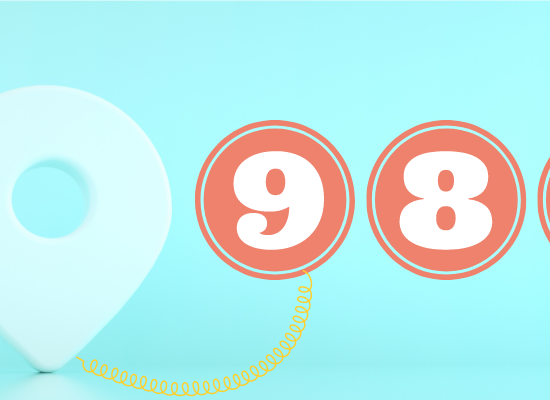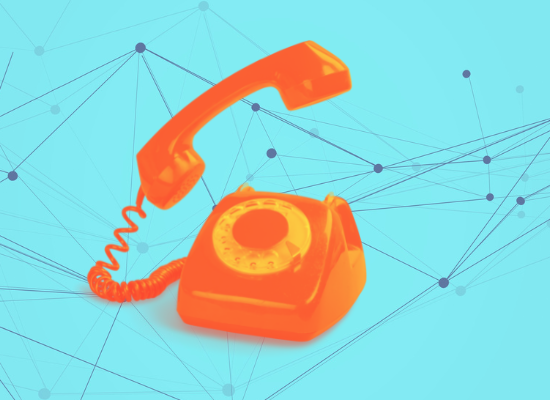
Imagine that 911 doesn’t exist and a fire breaks out in your home. If you are able to find the number, you might call the fire department directly. But what if they’re not equipped to come to your location and can only put out fires after you bring them to the fire station. What if you find out that the only people that will come to you during an emergency are the police? They are dedicated and hard-working, but they provide a very different type of public service.
This lack of a fire-specific emergency response seems ridiculous. Of course, we should have targeted services to respond to life-threatening emergencies; fire, law enforcement, medical emergencies like heart attacks. But in most communities across America, life-threatening mental health, addiction and suicidal crises are an emergency services after-thought. As in the example above, there might be a response but it won’t be equipped to deal with the specific crisis. Having no “brain crisis” response, most communities send law enforcement as first responders to individuals in mental health and substance use crisis.
Recently, the Federal Communications Commission (FCC) designated “988” as the future single number for mental health and suicide crises, to take effect by July 2022. This is a big step in the right direction. But who will RESPOND to these calls? The Bureau of Justice Assistance reported that 10% of police contacts are related to psychiatric emergencies; suggesting 24 million 911 calls per year could be appropriately served through 988 in the future (this is ten times the number of calls to the National Suicide Prevention Lifeline today). Currently, in most communities 911 dispatches law enforcement in response to these calls. Even when officers are well trained they have limited options if action is needed. They can arrest for a minor offense (leading to more misuse of jails for people with mental illness), transport to a hospital emergency room, or leave the individual in the community after their brief encounter without mental health or substance use treatment.
The demand is huge. And our lack of mental health crisis care is expensive as well as often inhumane. An estimated 20,000 to 25,000 people in crisis go to emergency departments every day in the US. Emergency departments are usually not equipped to provide psychiatric care, but their services are expensive. Neither emergency departments nor jails offer the specific services needed to resolve brain crises. We have a patchwork system relying on the wrong services that can’t respond timely or appropriately, while at the same time hindering the normal work of police officers and medical urgent care personnel.
The FCC’s 988 designation is a big step in the right direction. But more is needed. This month, participants in the Second Global Summit on Crisis Care (held in Washington DC in September 2019) released a joint declaration on access to appropriate crisis care. The document asserts the goal will be met, when mental health crisis care is available to anyone, anytime, anywhere—and when police officers and emergency departments are only involved when public safety or other medical needs require it.
For many state and community leaders struggling with the COVID-19 pandemic, budget reductions and a host of other overwhelming day-to-day challenges, designing and implementing such a vision might seem like scaling Mt. Everest. But, one state has already achieved a base camp. Although there is work yet to do, they can see clearly through to the top of the mountain. Their success—achieved without great spending increases—suggests that solutions to modern crisis care are achievable.
The Arizona Model Proof of Concept
Since the National Action Alliance for Suicide Prevention’s framework for crisis care (“Crisis Now”) was first introduced in 2016, it has often been labeled the “Arizona model.” Arizona’s relentless focus on immediate crisis access was a critical success factor, but the approach drew from innovations in multiple states, including Georgia and Colorado, that truly shaped the model’s expectations.
Learning from other states has been crucial. Georgia provided the first statewide crisis line with the ability to track care in real-time and dispatch mobile crisis teams. In 2005, Arizona brought in consultants from Texas who challenged the expensive and time-consuming practice of sending individuals in mental health crisis to the hospital emergency department for a medical evaluation and “clearance” prior to receiving care and support. Instead, law enforcement would drive to the closest crisis receiving facility—with medical staff on board—when an individual was in need. Three years later, Phoenix police and mental health leaders partnered to design the next generation crisis system—one that would closely partner with law enforcement but rely on mobile crisis outreach teams as first responders. This 24/7 crisis team approach can resolve mental health crises without the involvement of law enforcement over 90% of the time. This has helped free up officers for policing and reduced the “criminalization” of minor misbehaviors.
The police still are on the front lines, and still interact with people in crisis. But the approach is streamlined. Today, over 20,000 times per year, officers throughout Maricopa County connect an individual with mobile crisis or drop them off at one of the no-wrong-door crisis receiving centers with a turnaround time of roughly five minutes. No need to call ahead. The police simply drive up to a dedicated law enforcement entrance, introduce the individual in crisis to the receiving team, share any needed paperwork and are back on the street. The benefits for emergency medicine have also been substantial. Skipping hospital emergency departments to go straight to crisis facilities has produced huge efficiencies. The reductions in emergency department care have totaled 45 person-years annually. And the cost savings are substantial too.
In addition to the dramatic benefits for hospitals, we’ve estimated that these innovations in crisis care reduce the time law enforcement is drawn away from their core public safety mission by nearly 40 FTE law enforcement positions. The police in Los Angeles have coined the phrase “wall time,” to describe waiting in an emergency department with a person in crisis due to the hospital’s need for attending and transportation supports. Arizona is eliminating this challenge through a replicable model that can also be seen in the recently published SAMHSA National Guidelines for Behavioral Health Crisis Care.
Pursuing the Summit
These gains in Arizona’s crisis care system demonstrate that the goal of compassionate and effective care available to anyone, anytime, anywhere is possible. The FCC’s designation of 988 provides us with the opportunity to improve care for the brain the way we’ve improved other critical care. 60 years ago, we didn’t have a system for medical emergencies and our response for victims of heart attacks or car accidents was woefully inadequate. The introduction of 911 enabled a step by step process to design and implement the state-of-the-art response we have today. It effectively responds to thousands of fire, public safety and physical health emergencies every day across the nation.
How would we know when Arizona or other states achieve the “Everest summit” of this ambitious vision for psychiatric emergency response? The litmus test will be whether we’ve offered immediate care for those in psychiatric crisis while:
- Eliminating hospital emergency room screening or clearance prior to receiving mental health or substance use care,
- Reducing the involvement of law enforcement to times in which there is an explicit threat to public safety or active engagement in overt criminal activity, and
- Trained mental health and substance use professionals and peers serve as first responders for individuals in crisis.
While this climb will be challenging, we can do it. The first 988 calls will be answered by July 2022 and, as more individuals and their families shift from calling 911, we’ll have a dramatic opportunity to shift the way those in crisis access care. For states already setting the pace with mobile teams, additional capacity will be required to supplant the current police response. For those with crisis facilities, developing the ability to handle police “drop-offs” with the attitude of “thank you. May we have another?” will be essential.
In 1953, the first two individuals made it to the top of Mt. Everest. After it was done once, thousands followed. In crisis care, Arizona has established a base camp but still has some climbing to do. Once the first state demonstrates the fulfillment of a full “Crisis Now” system, others will follow. Then, and only then, mental health and substance use care will move out of the shadows and into the mainstream.
Check out a short video on “The Promise of 988: Crisis Care for Everyone, Everywhere, Every Time.”
About the Authors
Michael F. Hogan, PhD, and David W. Covington, LPC, MBA, are co-founder of Crisis Now and Zero Suicide Healthcare. Dr. Hogan, a former New York State Commissioner of Mental Health, and Covington, RI International’s president and CEO and co-owner of Behavioral Health Link, aim to foster equality for all Americans experiencing mental health, substance use, and suicidal crises.
This article was originally published on August 18, 2020.








